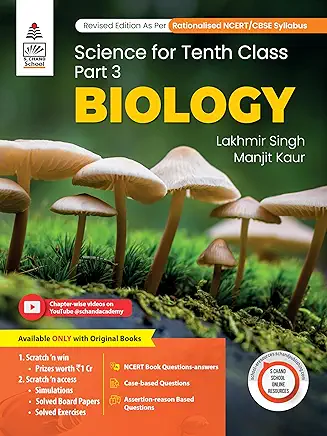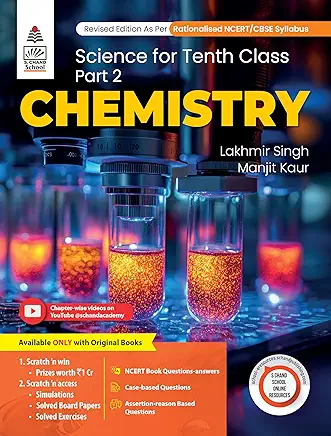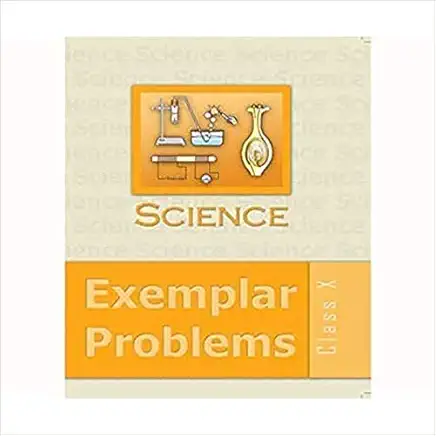CBSE Class 10 Biology: Our Environment - Part 8: One-Shot Revision
Complete Chapter Summary, Mind Map, and Exam Tips
Welcome to Part 8, the final post in our 8-part series on Our Environment. This is your one-shot revision guide to quickly recap all the important concepts, definitions, and key points just before your exam. Let's get started!
Recommended Books for Deep Practice
Chapter at a Glance: Concept Mind Map
ECOSYSTEM
(Biotic + Abiotic)
↓
Biotic (Living) Components
Producers, Consumers, Decomposers
↓
Food Chain & Trophic Levels
T1 → T2 → T3 → T4
Energy Flow
Unidirectional, 10% Law
Matter Flow
Cyclic (Nutrient Cycle)
↓
Human Impact on Environment
(Two Major Problems)
1. Ozone Layer Depletion
Caused by: CFCs
Solution: Montreal Protocol
2. Waste Management
Biodegradable vs. Non-Biodegradable
Solution: 3 R's (Reduce, Reuse, Recycle)
Quick Definitions: Key Terms
- Ecosystem
- All living (biotic) and non-living (abiotic) components of an area interacting with each other.
- Producers
- Organisms (like plants) that make their own food using sunlight (photosynthesis).
- Consumers
- Organisms that get their energy by eating other organisms (e.g., herbivores, carnivores).
- Decomposers
- Microorganisms (bacteria, fungi) that break down dead organisms and waste, recycling nutrients.
- Trophic Level
- Each step in a food chain where energy is transferred (e.g., T1=Producers, T2=Primary Consumers).
- 10% Energy Law
- Only 10% of energy is transferred from one trophic level to the next; 90% is lost as heat.
- Biomagnification
- The increase in concentration of harmful non-biodegradable chemicals (like DDT) at successively higher trophic levels.
- Ozone Layer
- A protective layer in the stratosphere (O₃) that absorbs harmful UV-B radiation from the sun.
- Biodegradable
- Waste that can be broken down by microorganisms (e.g., vegetable peels, paper).
- Non-Biodegradable
- Waste that cannot be broken down by microorganisms (e.g., plastic, glass).
Key Comparison: Biodegradable vs. Non-Biodegradable
| Parameter | Biodegradable Waste | Non-Biodegradable Waste |
|---|---|---|
| Decomposition | Can be broken down by decomposers. | Cannot be broken down by decomposers. |
| Nature | Usually organic in origin. | Usually man-made (synthetic). |
| Pollution | Do not cause pollution; can be composted. | Persist for a long time and cause pollution. |
| Examples | Vegetable peels, paper, cotton, cow dung. | Plastic bags, glass bottles, metal cans, DDT. |
Top 5 Concepts to Remember
- The 10% Law is Key: It explains why energy flow is unidirectional (one-way) and why food chains are short (usually 3-4 levels).
- Biomagnification vs. 10% Law: Energy (like in the 10% law) *decreases* as you go up the food chain. Harmful chemicals (in biomagnification) *increase* as you go up.
- Decomposers are Recyclers: Decomposers are vital. They don't *create* energy, but they *recycle* matter (nutrients), making the nutrient cycle possible (while energy flow is one-way).
- Ozone: Good vs. Bad: Ozone in the stratosphere (the "ozone layer") is good; it blocks UV rays. Ozone at ground level is bad; it's a pollutant (smog).
- The 3 R's (in order): The best way to manage waste is **Reduce** (use less) first, then **Reuse** (use again), and finally **Recycle** (make new from old).
Related Posts
Final Exam Tips
Tips for Answering Questions
- If you see a question with energy values (e.g., "Producers have 1000 J"), it's almost always a **10% Law** problem.
- If you see a question about "DDT" or "pesticides" in a food chain, the answer is always **Biomagnification**.
- If a question asks why a food chain is unstable, the answer is related to the stability of a **Food Web** (alternative food sources).
- Remember, CFCs (Chlorofluorocarbons) cause **Ozone Depletion**.
- Be clear: **Biodegradable** (like paper) is good, **Non-biodegradable** (like plastic) is bad.






